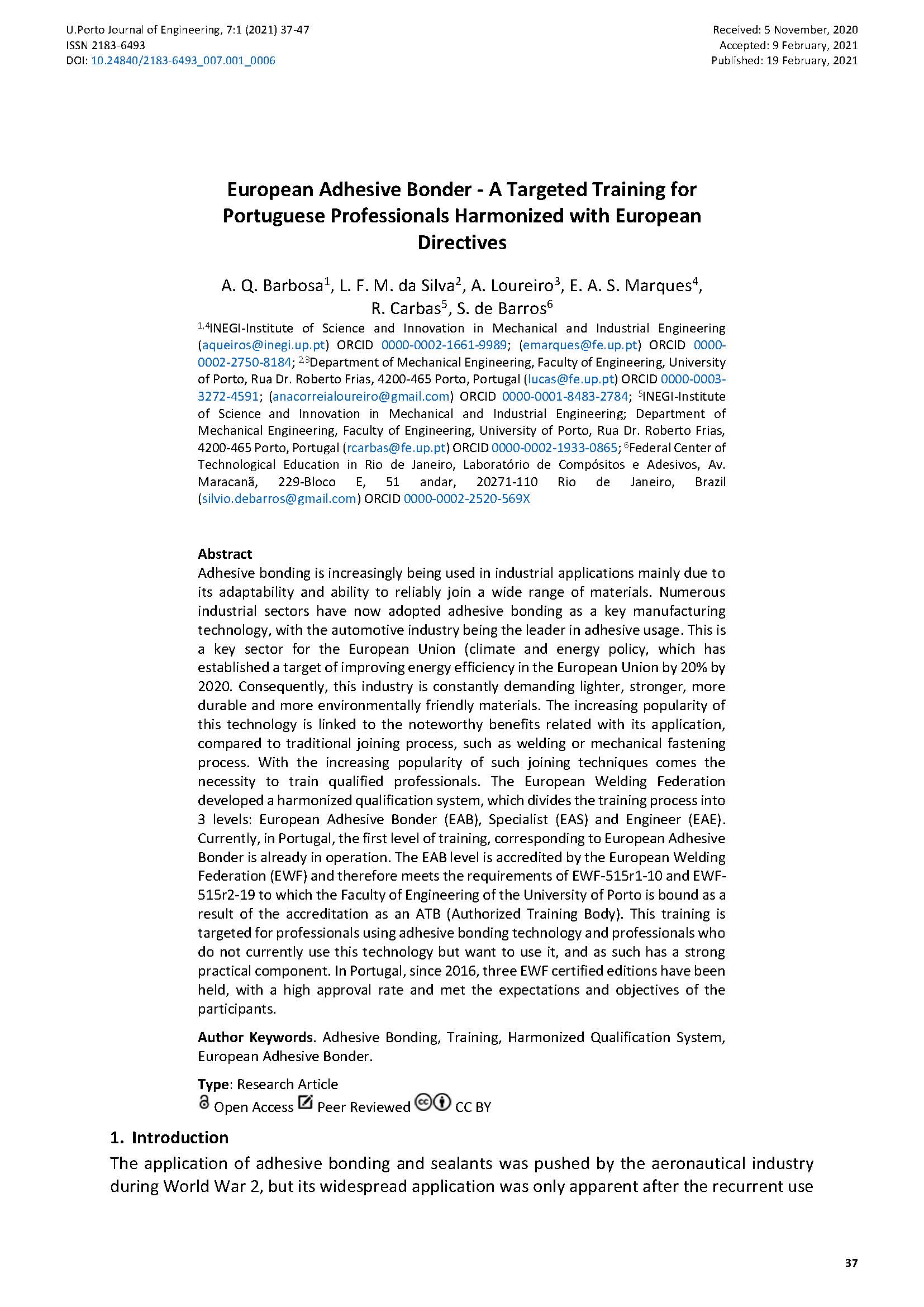European Adhesive Bonder A Targeted Training for Portuguese Professionals Harmonized with European Directives
Main Article Content
Abstract
Adhesive bonding is increasingly being used in industrial applications mainly due to its adaptability and ability to reliably join a wide range of materials. Numerous industrial sectors have now adopted adhesive bonding as a key manufacturing technology, with the automotive industry being the leader in adhesive usage. This is a key sector for the European Union (climate and energy policy, which has established a target of improving energy efficiency in the European Union by 20% by 2020. Consequently, this industry is constantly demanding lighter, stronger, more durable and more environmentally friendly materials. The increasing popularity of this technology is linked to the noteworthy benefits related with its application, compared to traditional joining process, such as welding or mechanical fastening process. With the increasing popularity of such joining techniques comes the necessity to train qualified professionals. The European Welding Federation developed a harmonized qualification system, which divides the training process into 3 levels: European Adhesive Bonder (EAB), Specialist (EAS) and Engineer (EAE). Currently, in Portugal, the first level of training, corresponding to European Adhesive Bonder is already in operation. The EAB level is accredited by the European Welding Federation (EWF) and therefore meets the requirements of EWF-515r1-10 and EWF-515r2-19 to which the Faculty of Engineering of the University of Porto is bound as a result of the accreditation as an ATB (Authorized Training Body). This training is targeted for professionals using adhesive bonding technology and professionals who do not currently use this technology but want to use it, and as such has a strong practical component. In Portugal, since 2016, three EWF certified editions have been held, with a high approval rate and met the expectations and objectives of the participants.
Downloads
Article Details

This work is licensed under a Creative Commons Attribution 4.0 International License.
Authors who publish with this journal agree to the following terms:
- Authors retain copyright and grant the journal right of first publication with the work simultaneously licensed under a Creative Commons Attribution License that allows others to share the work with an acknowledgement of the work's authorship and initial publication in this journal.
- Authors grant the journal the rights to provide the article in all forms and media so the article can be used on the latest technology even after publication and ensure its long-term preservation.
- Authors are able to enter into separate, additional contractual arrangements for the non-exclusive distribution of the journal's published version of the work (e.g., post it to an institutional repository or publish it in a book), with an acknowledgement of its initial publication in this journal.
- Authors are permitted and encouraged to post their work online (e.g., in institutional repositories or on their website) prior to and during the submission process, as it can lead to productive exchanges, as well as earlier and greater citation of published work (See The Effect of Open Access).

